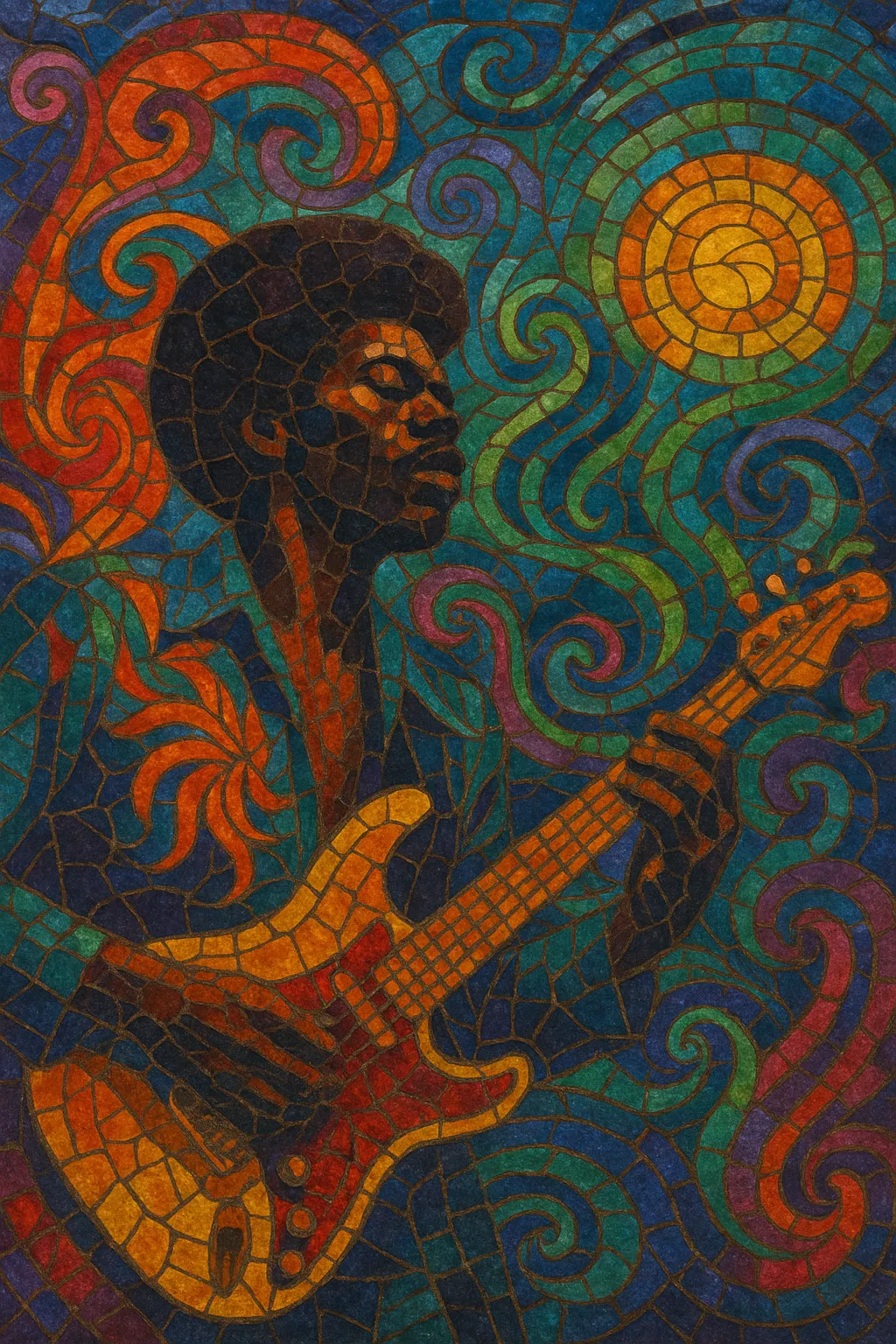
Psychedelic soul blends the grit and gospel-rooted emotion of soul and rhythm & blues with the studio experimentation and mind-bending textures of late-1960s psychedelic rock.
Expect fuzzed-out or wah-wah guitars, extended vamping grooves, bold bass lines, swirling organs and electric pianos, phased drums, and liberal use of tape delay, reverb, and stereo panning. Lyrically it ranges from utopian idealism and cosmic imagery to socially conscious reflections on race, war, and urban life.
The result is a sound that’s both danceable and hallucinatory: groove-first soul shot through with acid-rock color and studio-as-instrument creativity.
Psychedelic soul emerged in the United States in the late 1960s as soul artists absorbed the sonic experimentation of psychedelic rock. Producers and bands began pairing gospel-influenced vocals and R&B rhythms with fuzz guitar, wah-wah, swirling organs, and studio effects. Early landmarks include The Chambers Brothers’ “Time Has Come Today” (1967) and Sly & the Family Stone’s genre-fusing singles and albums that broke down barriers between rock, soul, and funk.
At Motown, producer Norman Whitfield steered The Temptations into a new era with hits like “Cloud Nine” (1968), “Psychedelic Shack” (1970), “Ball of Confusion” (1970), and “Papa Was a Rollin’ Stone” (1972). Whitfield’s work—also with The Undisputed Truth—stretched song lengths, embraced darker social themes, and foregrounded studio effects, horns, and strings over hypnotic vamps. Meanwhile, Rotary Connection (featuring Minnie Riperton) crafted lush, orchestral psych-soul on Chicago’s Cadet label.
Psychedelic soul quickly bled into heavier, funkier directions. Funkadelic fused acid-rock guitar with deep funk rhythms, redefining the edge where soul, rock, and funk met. Curtis Mayfield’s solo work married intimate falsetto soul with cinematic, socially engaged arrangements; War blended Latin grooves, funk, and psych textures on extended jams. As the 1970s progressed, the sound’s rhythmic emphasis helped catalyze funk’s dominance and informed the cinematic soul of blaxploitation soundtracks.
By the mid-1970s, disco and slicker soul styles eclipsed psychedelic soul in the mainstream, but its DNA lived on. The movement laid foundations for P-Funk, influenced funk-rock hybrids, and later fed into acid jazz and neo-soul aesthetics. Hip hop and G-funk producers heavily sampled its lush orchestrations, dusty drums, and wah-wah motifs—keeping the genre’s heady mix of groove and atmosphere alive across decades.
Start with an insistent, mid-tempo backbeat (often 85–110 BPM). Let the bass carry a melodic, syncopated line that locks with a dry, punchy kick and crisp snare. Percussion (congas, tambourine, shakers) adds drive and width. Keep grooves vamp-based and repetitive to induce a hypnotic feel.
Use soulful progressions built on minor keys and modal vamps (Dorian/Aeolian) with extended jazz-soul color (7ths, 9ths, 11ths). Write vocal lines with gospel inflection—call-and-response hooks, layered harmonies, and occasional falsetto leads. Melodic motifs should be memorable but leave space for instrumental textures.
Combine classic soul instrumentation (drums, electric bass, horns, strings, B-3 organ/Rhodes, clavinet) with psychedelic color: fuzz and wah-wah guitars, phasing/flanging on drums or keys, tape delay throws, spring/plate reverb, and bold stereo panning. Use orchestrations (strings/horns) for drama, but keep them riding the groove rather than overpowering it.
Favor extended arrangements with sectional builds and breakdowns. Introduce textures gradually (percussion, guitar filigrees, string swells), then strip back to bass-and-drums to reset the tension. Employ studio-as-instrument techniques: feedback swells, reversed elements, tape saturation, and creative automation for movement.
Balance cosmic/psychedelic imagery with social commentary—topics like freedom, community, protest, love, and urban realities. Keep choruses direct and chantable, allowing the groove to do heavy lifting while verses carry narrative detail.

